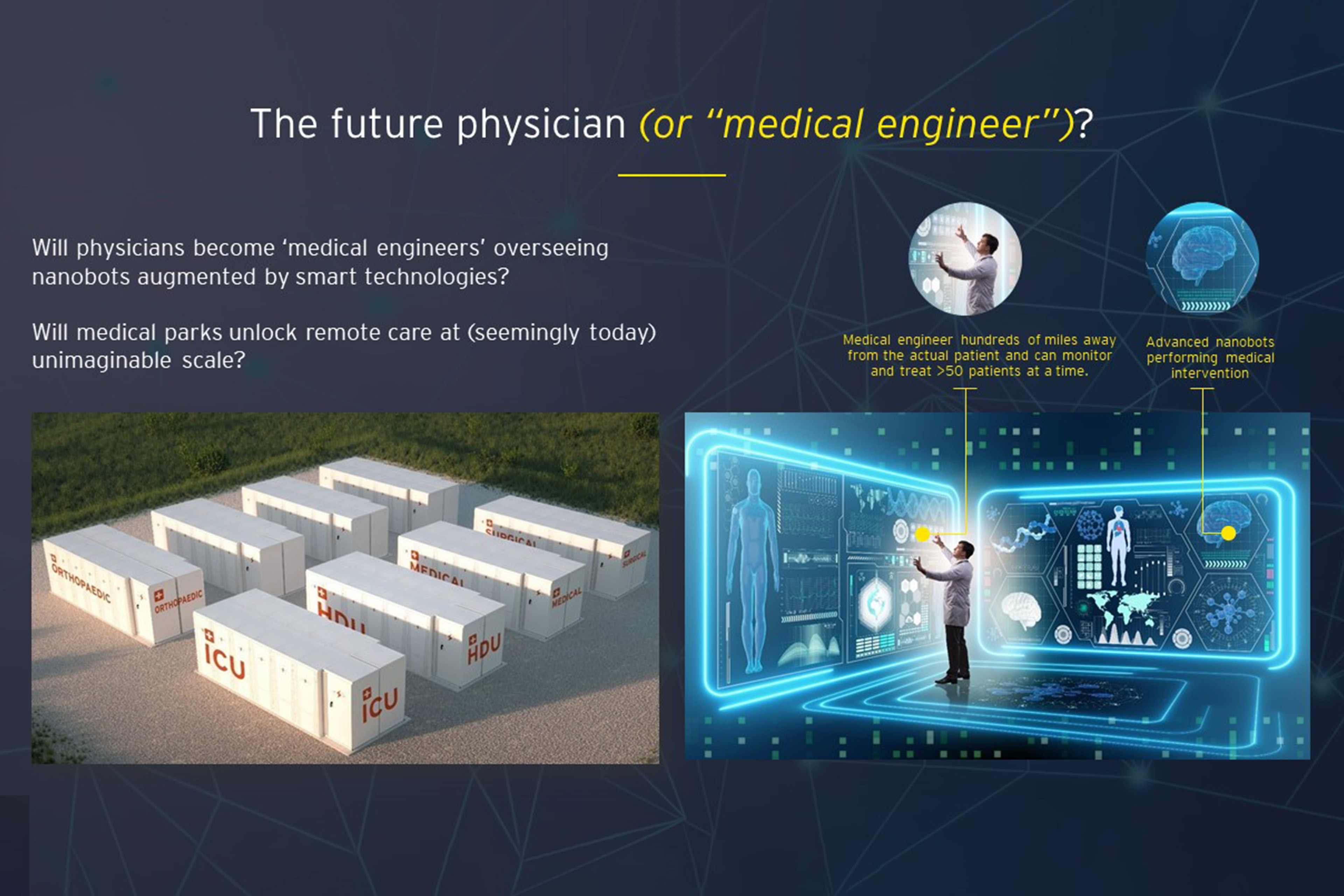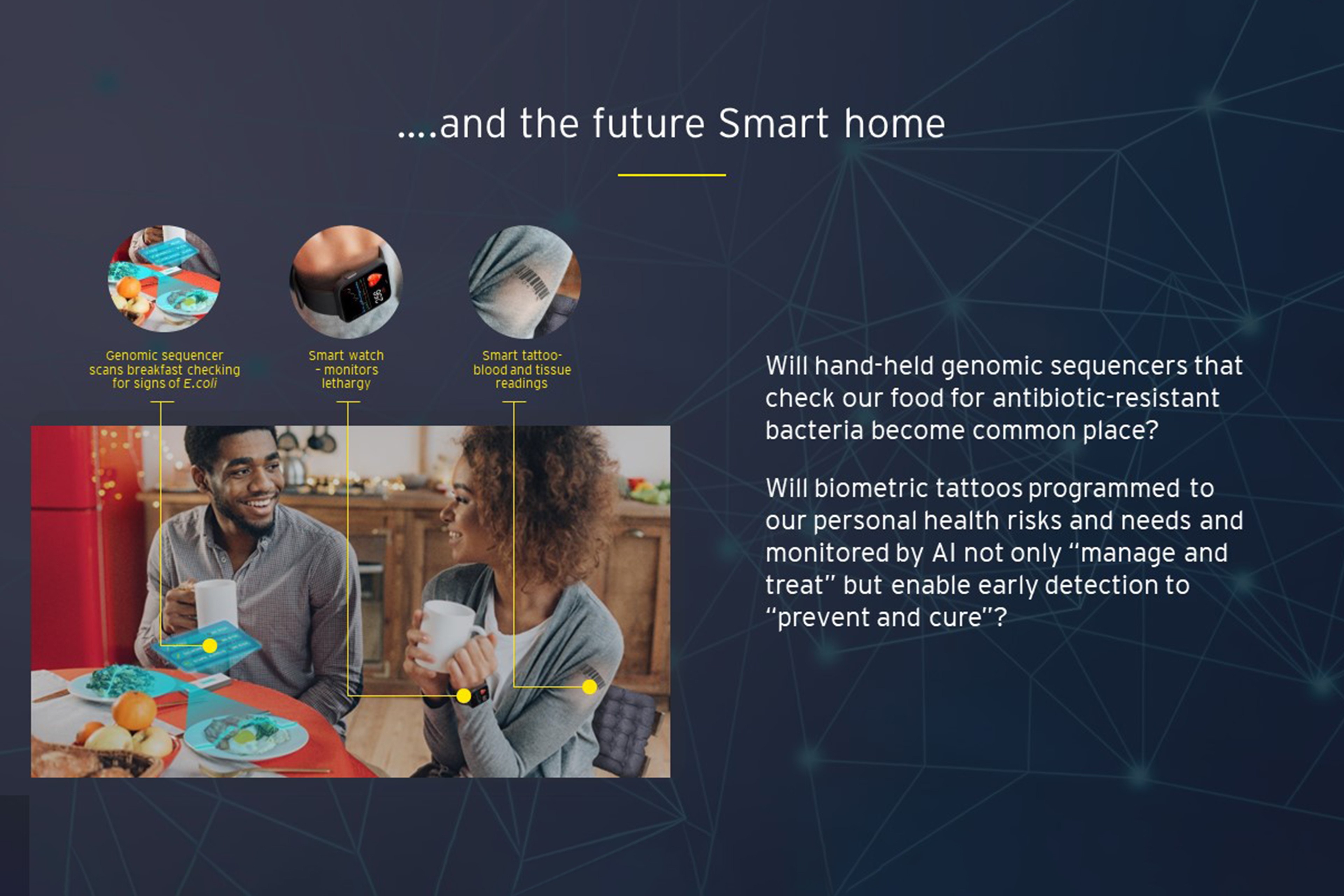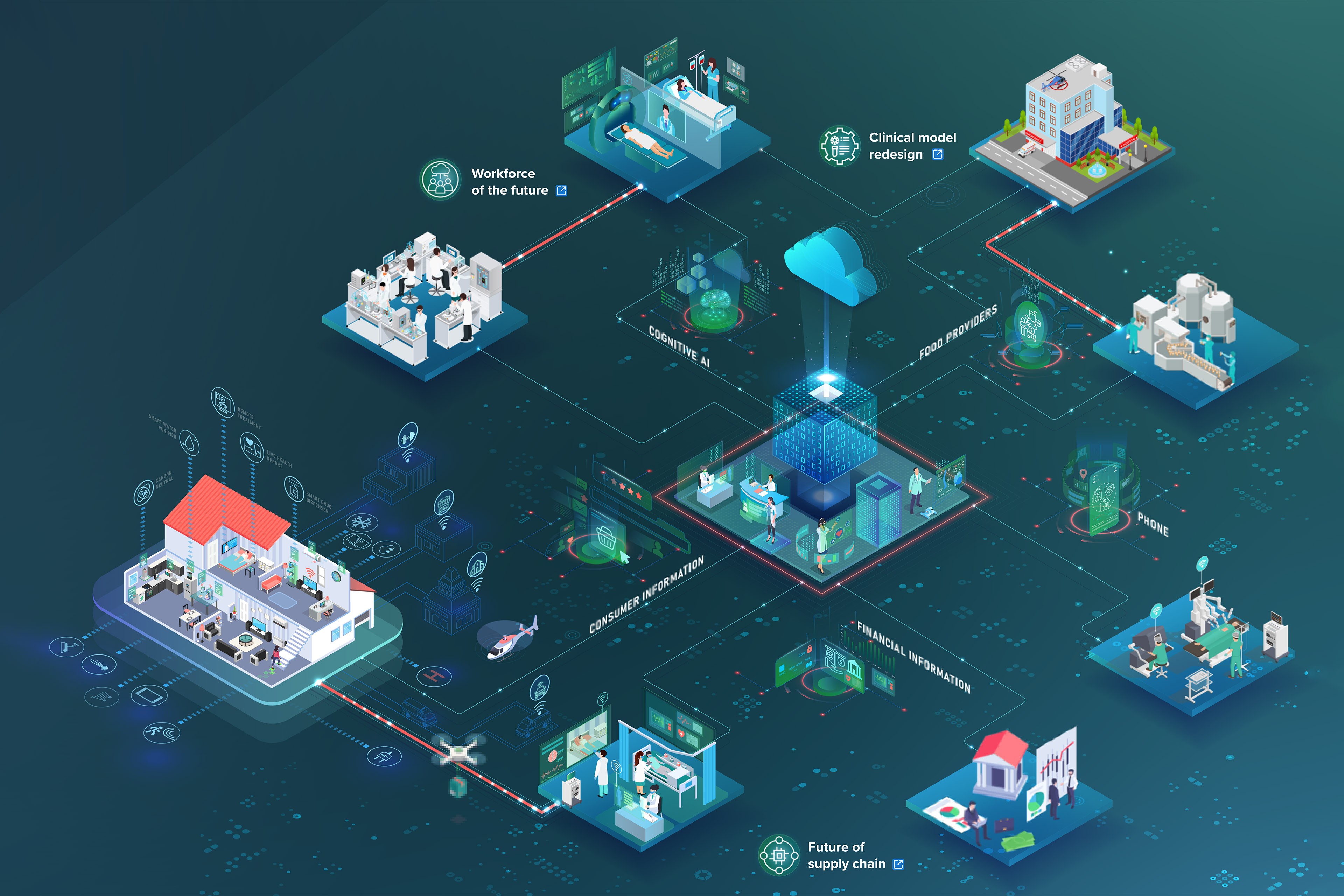The health care revolution is not just an opportunity but an urgent and essential need. Our existing health care models are not sustainable in the long run. The cost of health spending continues to rise with the rapid worldwide growth of costly chronic diseases. Meanwhile, the global health care workforce faces a predicted shortfall of 18 million health workers by 2030, a gap which will accelerate the necessary adoption of digital technologies.
Yet while these trends are widely acknowledged, health care organizations and stakeholders need to recognize that we now also have the tools for transformation, which will not only drive efficacy of care and personalization, but also, and equally importantly, better access and efficiency.
Science and technology are the engine, data the fuel
New technologies are already driving the evolution of health. Today, health care innovators are working on integrating cloud computing, sensors, virtual and extended reality systems and fifth-generation broadband into our care delivery models. Just over the horizon, still more advanced technologies like quantum computing and an immersive metaverse are taking shape. There is no single new technology that holds the key to the future of health care. Rather, as these technologies continue to evolve and converge in the health care space, they are enabling the creation of a growing internet of medical things (IoMT).
In the future, this IoMT will extend itself everywhere. Our homes and working environments will be loaded with connected appliances, virtual assistants, motion sensors, remote monitoring tools connected to smart infrastructure. Beyond this, the very surfaces and interior spaces of our bodies will be mapped by bioelectronic implants, smart clothing, ingestible sensors, and ultimately nanobots and smart dust.
The net effect of this ever-present IoMT will be to drive an unprecedented growth in the quantity and quality of health care data available. We are already witnessing an exponential surge in health care data, with billions of gigabytes of patient information being generated inside and outside health systems every year. Consider that:
- In an increasingly connected world, exponentially growing amounts of data are captured passively all the time. There were estimated to be one trillion sensors in the world in 2020 — compared to about 20 million a decade previously (a 10-year CAGR of 195%.)1
- As the number of tools for data capture increases, so does the volume of data relating to each individual: even with the uneven distribution of technology, every person on the earth generates an average of over 50 terabytes of data per year. Though only a minority of this is directly health data, we now know that up to 80% of health outcomes are shaped by non-clinical data.
The projected 36% CAGR for the growth of health data over the next three years is set to outpace the rise in data generation for industries such as manufacturing (6.3%) or financial services (6%).
Data — particularly the disparate, often unstructured data generated from our daily lives, which is often relevant to health outcomes — requires new analytical tools to turn it from raw information into actionable insights. This analytical power is now becoming available and applied to new previously unused data sources in the creation of new knowledge maps.
Building an intelligent ecosystem that can personalize insights
The growing presence of artificial intelligence (AI) within health care is reflected in the approval of over 130 novel algorithms in 2021. These algorithms already offer tools to perform digital triage, optimize care pathways, provide behavioral coaching and real-time disease management, and execute deeper analysis on genomic and other big data sets.
AI’s potential goes far beyond these use cases, however.
As the world of health care data continues to expand, AI offers a means to connect, combine and interrogate these data differently and unlock actionable insights. AI’s rapidly advancing ability to help us Sense, Perceive, Learn, Know, Reason, Plan, and Act; i.e., a combination of human and machine offers routes to augment Human-only intelligence at unimaginable levels compared to today.
The adoption of AI into care delivery will be a continuous learning process, in which our health care algorithms continuously grow in intelligence and value. This combination of human and computational power will offer more value and power than either alone. With the power of AI, we can begin to link the huge volumes of data generated and the vast array of technological tools being developed into a comprehensive, integrated smart health system.
This system will be built on layers of data integration and analysis, with interconnecting platforms linked by a data backbone. The personalized data cloud surrounding each individual patient will be fed into a data layer which allows that patient’s data to be compared to individualized baselines and to real-world data on comparable patient cohorts. From here the system can begin to plan better-informed targeted interventions – and learn from these interventions to continually refine care approaches for each patient.
This data-driven smart system will enable us to break down the silos between care settings and optimize decision-making across the patient journey. Most importantly, it will finally offer a way to deliver truly human-centric care.






